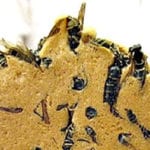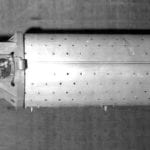 Movies and TV
Movies and TV  Movies and TV
Movies and TV  History
History 10 Things You Never Knew About Presidential First Ladies
 Movies and TV
Movies and TV 10 Zombie Movies That Will Actually Terrify You
 Humans
Humans 10 Times Scientists Were Absolutely Sure… and Absolutely Wrong
 Our World
Our World 10 Pivotal Moments for Life on Earth
 Movies and TV
Movies and TV 10 Most Realistic Medical TV Shows of All Time
 Creepy
Creepy 10 Eerie & Mysterious Ghosts of the Pacific Coast
 Weird Stuff
Weird Stuff 10 Typos That Accidentally Changed History
 History
History 10 Times Trickery Won Battles
 Technology
Technology 10 Awesome Upgrades to Common Household Items
 Movies and TV
Movies and TV 10 Movie Flops That Found Their Way to Cult Classic Status
 History
History 10 Things You Never Knew About Presidential First Ladies
 Movies and TV
Movies and TV 10 Zombie Movies That Will Actually Terrify You
Who's Behind Listverse?

Jamie Frater
Head Editor
Jamie founded Listverse due to an insatiable desire to share fascinating, obscure, and bizarre facts. He has been a guest speaker on numerous national radio and television stations and is a five time published author.
More About Us Humans
Humans 10 Times Scientists Were Absolutely Sure… and Absolutely Wrong
 Our World
Our World 10 Pivotal Moments for Life on Earth
 Movies and TV
Movies and TV 10 Most Realistic Medical TV Shows of All Time
 Creepy
Creepy 10 Eerie & Mysterious Ghosts of the Pacific Coast
 Weird Stuff
Weird Stuff 10 Typos That Accidentally Changed History
 History
History 10 Times Trickery Won Battles
 Technology
Technology 10 Awesome Upgrades to Common Household Items
10 Most Elaborate Pranks of the 1900s
We all love a good prank. Catching someone off guard, giving them a fright, or misleading them into fear or bewilderment—it all equates to good-spirited fun and entertainment unbound by the limitations of language, culture, and location. Time itself can be bent by the very same confusing look you get from playing with another’s sensibilities.
Unfortunately, our one time of the year, Halloween, seems to center more around the treat part than the much more vaunted and potentially viral practical joke trick. But just because there was no Halloween and no TikTok doesn’t mean the past is dry and humorless.
Here are ten of the most elaborate practical jokes from the 1900s.
Related: Top 10 Hilarious Pranks Pulled To Promote Movies
10 Ghost Student
In 1927, George P. Burdell was enrolled at Georgia Tech. He wrote for the school newspaper, and for decades, George spent his days at the establishment until finally, he graduated with flying colors. The thing is, George P Burdell does not exist and never did.
When William Edgar Smith was mistakenly sent two enrollment forms, he decided to enroll the UGA football captain George P Butler, only he went with Burdell as the last name instead.
Over the years, he would complete two of each of his assignments, leading the fictional Burdell to pass with flying colors and even gain a degree in Mechanical Engineering. Ever since, the character Burdell has obtained many achievements and has gone on to fly a B-17 bomber in World War 2 and partake in subsequent wars, travel the world, and receive letters for basketball. He even served on the board of directors of MAD magazine.[2]
9 Giant Steak
If there is one thing fans of the Seattle Mariners love more than baseball, it’s steak. Massive 1,200-pound (544-kilogram) steaks, living, breathing, and… well, you get the picture. When Lou Piniella, the coach, made a bet with Ken Griffey Jr. that he wouldn’t be able to hit a particular pitch out of the batting cage on the first day of live pitching. Griffey took the bet, swung, and missed, thereby losing the bet. He now owed Piniella a steak dinner.
Griffey, being true to his word, decided to turn the tables and pull a prank. When Piniella went to his office in Peoria, AZ, he found more than he bargained for. A fully grown, living Hereford cow, underprepared and uncooked. Piniella took the prank with a smile. According to reports, a sheep was also roped into training at some stage.[2]
8 Spaghetti Trees
If you want proof that people have always believed whatever they read and that it’s not just a problem for the modern era, remind yourself that people believed there were trees on which spaghetti could grow. That is not a metaphor. In 1957, the BBC ran a segment about farmers in Switzerland growing spaghetti-like fruit.
It was meant as nothing but an innocent April Fools prank, with the producers allowing the crew a budget of £100 to create a fun, practical joke. It resulted in unexpected hysteria. The segment was filmed in Castiglione for authenticity, where the crew bought 20 pounds (9 kg) of uncooked spaghetti and hung the strands from branches to make it seem like they were “spaghetti trees.”
There was an unexpected blowout as a result of their antics, with the BBC buried in calls demanding explanations. Some realized it was a prank and directed their outrage at the broadcaster.[3]
7 Indecent Naked Animals
When comedian Buck Henry established an organization (dreamed up by Alan Abel) called the Society for Indecency to Naked Animals (SINA), he wanted nothing from it but a few laughs. What he told the public was that the mission statement of SINA was to put clothing on animals to protect their modesty, you know, because that is important. Making appearances as “G. Clifford Prout,” he was a man anointed to put clothes on every living thing. A nude horse is a rude horse.
The campaign was a success, receiving letters of support and even offers of large checks after he appeared on popular shows like NBC’s Today Show. Thousands of viewers reacted, and more interviews and publicity followed before he began to urge his members (which he suggested had grown to more than 50,000) to take a more active stance by handing summonses to people who allow their pets to shamelessly prance around naked. The hoax was finally exposed a few years later.[4]
6 Iceberg Down Under
When millionaire Dick Smith told the world that he would tow an iceberg from the Arctic Circle, people had no reason to doubt him. He had the means. What should have aroused suspicion was the time of year it was. On April Fool’s Day, Smith came through, towing an iceberg from Antarctica all the way to Sydney Harbour, where people reveled at the obscene waste of resources. Smith promised to carve the giant iceberg into smaller cubes and sell them as natural pure “Dicksicles” which would improve the flavor of any drink.
It turned out Smith roped in a few of his friends, rented a barge, and filled it with a plastic sheet, shaving cream, and fire fighting cream. The whole prank cost him a meager $1,450 of his fortune. All for kicks.[5]
5 Great Rose Bowl Hoax
In what is considered the greatest hoax of its kind, the Rose Bowl Hoax stands out as one of the sport’s greats. The year was 1961, and the Washington Huskies were about to defeat the No. 1 ranked Minnesota Gophers, but all that remained from that day was the great Rose Bowl Hoax.
A small group of students from Caltech, masterminded by Lyn Hardy, altered the University of Washington’s halftime flip-card routine so that it would spell “CALTECH”—thereby ensuring the moment is recorded in the history book of hoaxes.
After learning the band and cheerleaders were housed in dormitories, Hardy showed up as a reporter for the Dorsey High student newspaper. The cheerleaders who organized the flip-card routine shared the technical details. With a healthy dose of duplicity and lock-picking and a fair bit of good fortune, the prank came to fruition.[6]
4 Pitcher Monk
Most of us are mystified by the monks and their meditative antics, disciplined and remote. Therefore, it’s easy to believe that a monk can program his body and mind to pitch the perfect strike. When readers opened their Sports Illustrated on April 1, 1985, that was exactly what was promised.
Sidd Finch—part pitcher, part yogi—played brass instruments and resembled Disney characters when he pitched. Sidd was touted to change the landscape of the baseball world with an arm like a cannon. His ability to pitch a 168 mph (270 km/h) ball piqued all interest.
The subtitle of the article was “He’s a Pitcher, part yogi and part recluse. Impressively liberated from our opulent lifestyle, Sidds decided about yoga—and his future in baseball.” Each of the words spelled out H-A-P-P-Y A-P-R-I-L F-O-O-L-S D-A-Y.[7]
3 War of the Worlds
H.G. Welles wrote an extraterrestrial masterpiece that has been translated into cinema on numerous occasions throughout the years, but there was a time not too long ago when the story had not made its way to our common collective fictional knowledge.
On Halloween morning of 1938, Orson Welles and his crew scrambled together a radio adaptation of Welles’s The War of the Worlds, converting the old novel into fake news bulletins describing an alien invasion of New Jersey.
Some listeners, taken by the moment, began to make terrified phone calls to the local police department, newspaper offices, and radio stations, convinced by a mass hysteria. By the next publishing run, the story had made headlines, and reports of mass stampedes and suicides angered listeners who threatened to shoot Welles at sight.[8]
2 Sokal’s Hoax
Also known as the Sokal Affair, the hoax involved a university, a genius, and a sense of right and wrong. Late in 1994, when Alan Sokal realized the quality of published work had gone backward at some point, he submitted a sham article to the cultural studies journal Social Text, in which he touched on a few topics in physics and mathematics, drawing on various cultural, philosophical, and political morals that he estimated might be considered fashionable with the academics commentators.
The journal did not detect the tongue-in-cheek nature of the article and published it. Later, Sokal revealed the article was a hoax, thereby attracting public attention to what Sokal considered a decline in standards of rigor in the academic community.[9]
1 Home For Christmas

Baby Jesus disappeared! From the nativity scene, that is. In January 1994, when Ted Laspe got around to taking down the nativity scene to decorate for the holidays, he realized his baby Jesus was gone. In its place was a printed message: “I’m taking a vacation. I’ll see you on my birthday.” What ensued was nothing short of hoax-genius.
Weeks later, Laspe received cards and pictures from all over the country: Salt Lake City, Vegas, Colorado, and even Alaska. Baby Jesus was having the time of his life with the handwriting always different. So Laspe hatched an elaborate plan to catch the kidnappers. However, he passed away after receiving the final card in the hospital. Laspe’s wife, Elizabeth, received another note: “Hi Liz, I took some time off to make sure Ted got settled in. He’s doing fine.”
Baby Jesus was returned by taxi at 6 pm on Christmas Eve.[10]








